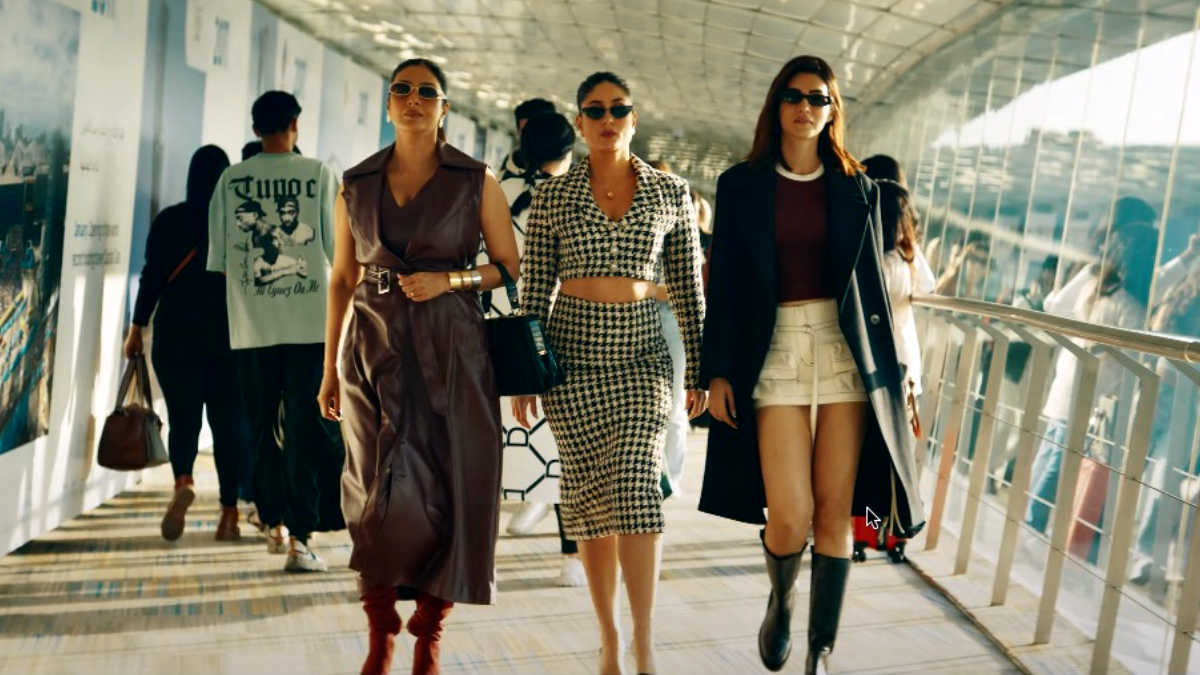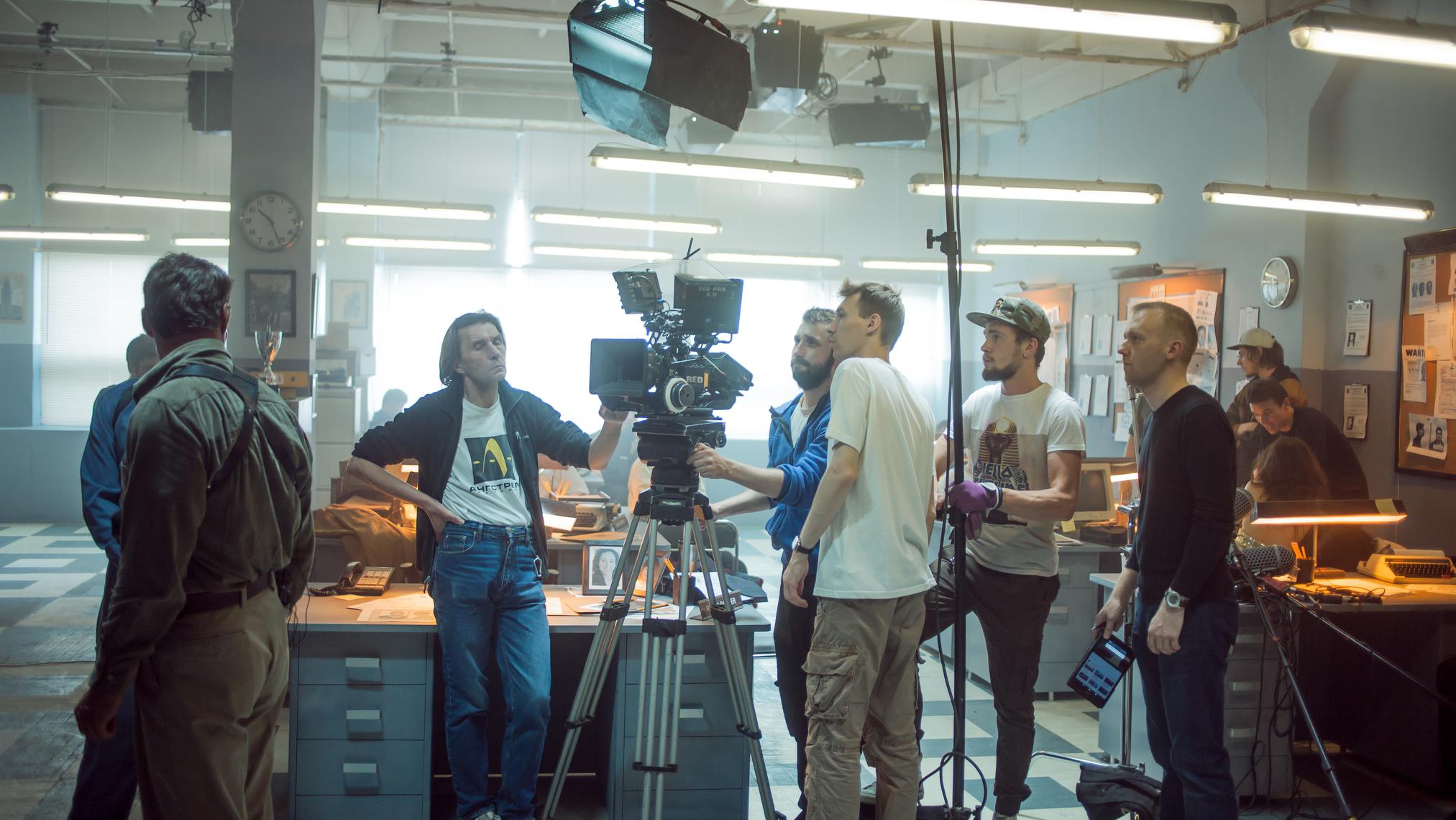Technological Advancements and Crew Roles: Review Movie Crew

The evolution of filmmaking technology has been nothing short of a cinematic revolution, dramatically reshaping the roles and responsibilities of everyone from the director to the gaffer. Gone are the days of solely relying on bulky film cameras and painstaking chemical processes; the digital age has ushered in a new era of efficiency, accessibility, and creative possibilities, but not without its own set of challenges.
Technological advancements have fundamentally altered the roles and responsibilities of movie crew members. The shift from film to digital has streamlined many processes, impacting the size and composition of film crews, and creating entirely new job titles. This transition hasn’t simply been about replacing old tools with new ones; it’s a complete reimagining of how movies are made, from pre-production to post.
Digital Filmmaking’s Impact on Crew Size and Composition
The transition to digital filmmaking has, in many cases, led to smaller crew sizes. The need for large teams dedicated to film processing and handling is significantly reduced. Tasks once requiring multiple individuals can now be handled by fewer, more versatile crew members proficient in digital workflows. For example, the role of a film loader and developer is virtually obsolete, while the responsibilities of a digital imaging technician (DIT) have expanded to encompass many of those tasks. While some roles have been eliminated or combined, others have become more specialized, demanding a higher level of technical expertise.
Emergence of New Crew Roles Due to Technological Innovations
The digital revolution has not only streamlined existing roles but also birthed entirely new ones. The rise of visual effects (VFX) has created a massive demand for VFX artists, compositors, and digital animators. Similarly, the increasing reliance on computer-generated imagery (CGI) has led to the emergence of roles such as CGI supervisors and texture artists. Furthermore, the integration of advanced camera systems, like those using remote control or high dynamic range (HDR), requires specialized operators and technicians. The need for drone operators for aerial shots is another example of a role that didn’t exist until recently.
Specific Technologies and Their Effects on Various Crew Departments
The introduction of digital cameras, for example, has profoundly impacted the cinematography department. The ability to instantly review footage eliminates the need for extensive on-set film processing, allowing for faster turnaround times and more creative freedom during shooting. Furthermore, the widespread use of digital intermediate (DI) workflows has given colorists significantly more control over the final look of a film. In the sound department, digital audio workstations (DAWs) have revolutionized sound recording, editing, and mixing, allowing for more precise and efficient post-production. Similarly, the editing department has benefited immensely from non-linear editing systems (NLEs), which offer greater flexibility and control over the editing process. Finally, the rise of virtual production, utilizing LED walls and real-time rendering, has changed the game for production designers and art departments, allowing for incredibly immersive and realistic sets. These technological advancements are continually reshaping the landscape of filmmaking, demanding adaptation and innovation from all crew members.
The Crew’s Contribution to Film Style

The magic of cinema isn’t conjured by a single wizard behind the camera; it’s the orchestrated symphony of a skilled crew. Each member, from the gaffer wielding their lighting magic to the sound recordist capturing the subtle whispers of a scene, contributes to the film’s unique style and overall aesthetic. Their collective expertise transforms a director’s vision from a fleeting thought into a tangible, emotionally resonant cinematic experience.
The composition and expertise of a movie crew are intrinsically linked to the film’s style. A director might have a clear vision, but it’s the crew who translate that vision into reality, making crucial stylistic choices that profoundly impact the audience’s perception. Consider the difference between a gritty, handheld documentary style and a polished, meticulously composed period drama. The choice of camera angles, lighting techniques, editing pace, and sound design all work in concert to create the specific mood and atmosphere. The director provides the blueprint, but the crew are the master builders.
Camera Angles and Composition’s Influence on Style
The cinematographer, in close collaboration with the director, makes crucial decisions about camera angles, shot composition, and movement. Wide shots can establish setting and context, while close-ups reveal emotion and intimacy. A fast-paced montage of jump cuts can create a sense of urgency and chaos, whereas slow, deliberate pans can evoke a feeling of tranquility. For instance, the shaky, hand-held camera work often found in found-footage horror films directly contributes to the film’s unsettling, realistic style, contrasting sharply with the smooth, sweeping camera movements typical of epic historical dramas. The cinematographer’s choices directly shape the viewer’s emotional response and understanding of the narrative.
Sound Design and its Impact on Cinematic Style
Sound design is often an unsung hero in shaping film style. The sound mixer and sound editor are responsible for creating an auditory landscape that complements and enhances the visual narrative. The choice of music, ambient sounds, and sound effects can dramatically alter the mood and tone. A film score featuring soaring strings might enhance the romantic atmosphere of a love story, while a jarring, dissonant soundscape might heighten the tension in a thriller. The absence of sound, or the use of diegetic sound (sounds that are part of the scene’s reality), also significantly influences the viewer’s experience, contributing to the film’s overall style.
Editing Techniques and Their Contribution to Film Style, Review movie crew
The editor is the architect of the film’s rhythm and flow. Their choices in pacing, transitions, and the arrangement of shots significantly influence the viewer’s experience. Rapid cuts can create a sense of excitement and urgency, while slow, deliberate cuts can emphasize reflection and contemplation. The use of jump cuts, cross-cutting, and other editing techniques can manipulate time and create specific emotional responses. The editing style of a film is a key component of its overall aesthetic, shaping the viewer’s understanding of the narrative and characters.
Crew Roles and Distinct Film Styles
The following bullet points illustrate how specific crew roles contribute to the distinct styles of various film genres:
- Documentary: The cinematographer employs natural lighting and handheld cameras for a raw, realistic aesthetic. The sound recordist prioritizes capturing ambient sounds to immerse the viewer in the environment. The editor often uses minimal cuts to maintain a sense of realism and immediacy.
- Action: The cinematographer utilizes dynamic camera movements, fast cuts, and extreme close-ups to heighten the sense of action and excitement. The sound designer incorporates loud sound effects and a powerful score to emphasize the intensity of the action sequences. The editor employs quick cuts and creative transitions to enhance the pace and energy.
- Romantic Comedy: The cinematographer uses soft lighting and warm color palettes to create a romantic atmosphere. The sound designer incorporates upbeat music and witty sound effects to enhance the comedic elements. The editor uses a brisk pace to maintain a light and playful tone.
Challenges Faced by Movie Crews

Making a movie is less “lights, camera, action!” and more “lights, camera, action… wait, where’s the catering? And why is the rain machine malfunctioning *again*? Oh, and the lead actor just sprained his ankle trying to perform a daring stunt that wasn’t even in the script.” Filmmaking, even the most glamorous parts, is fraught with unexpected hurdles. The smooth, seamless final product is the result of countless hours of problem-solving, resilience, and a healthy dose of caffeine.
The challenges faced by movie crews are diverse and often interconnected, demanding a high degree of adaptability and collaborative spirit. Budget constraints, unforeseen weather events, and even the occasional diva-esque outburst from a cast member can derail a production faster than you can say “cut!” However, it’s precisely these challenges that reveal the true strength and ingenuity of a well-oiled movie machine. The ability to navigate these obstacles, often with limited resources and time, is what separates a successful production from a chaotic mess.
Time Constraints
Time is often the enemy in filmmaking. Tight schedules, especially on big-budget productions, are the norm, leaving little room for error or unexpected delays. Imagine the pressure of filming a complex scene with multiple actors, elaborate sets, and special effects all within a limited timeframe, perhaps just a single day. This necessitates meticulous planning, efficient organization, and a highly coordinated team effort. Overcoming these constraints requires a clear shot list, well-defined roles, and the ability to adapt quickly to unforeseen circumstances. For instance, the crew of “Lord of the Rings” faced immense time pressures to complete the trilogy. Their solution? Meticulous pre-production planning, efficient scheduling, and a highly skilled team that worked tirelessly to meet the deadlines.
Budget Limitations
Budget limitations are another major challenge. Even big-budget films operate with constraints. Resourceful problem-solving is key; the creative team must find innovative ways to achieve a high-quality product without exceeding the budget. This might involve utilizing readily available locations instead of expensive sets, employing clever camera angles to minimize the need for elaborate sets, or relying on the talents of a smaller, highly skilled crew. The low-budget film “Primer,” for example, cleverly utilized limited resources and a small crew to create a gripping and visually inventive science fiction thriller. Their resourceful approach proved that creativity can triumph over financial constraints.
Location Difficulties
Filming on location introduces its own set of problems. Weather conditions, logistical challenges, and access restrictions can significantly impact production. Imagine a scene requiring a beautiful sunset over a specific landscape, only to be met with unexpected torrential rain. Overcoming these challenges requires flexibility, backup plans, and a willingness to adapt to changing circumstances. The crew may need to adjust the shooting schedule, find alternative locations, or even utilize special effects to achieve the desired outcome. The production of “The Revenant,” with its challenging and remote filming locations, serves as a testament to the crew’s ability to overcome geographical obstacles.
Crew Morale
Maintaining high crew morale is paramount. Long hours, stressful situations, and the pressure to deliver high-quality work can take a toll. A positive and supportive work environment, however, fosters collaboration, problem-solving, and ultimately, a more successful production. Regular breaks, clear communication, and recognition of individual contributions can significantly boost morale. Conversely, a demoralized crew can lead to decreased productivity, errors, and even conflict, ultimately impacting the final product. Maintaining a positive and supportive environment is as crucial to the production process as the technical aspects of filmmaking.
Common Challenges and Potential Solutions
Review movie crew – Effective teamwork and problem-solving are vital in navigating the complexities of movie production. Below are some common challenges and potential solutions:
- Challenge: Unexpected weather delays. Solution: Develop contingency plans, including alternative indoor locations or rescheduling scenes.
- Challenge: Equipment malfunctions. Solution: Have backup equipment readily available, and ensure crew members are proficient in troubleshooting.
- Challenge: Actor availability issues. Solution: Flexible scheduling, clear communication, and potentially adjusting the shooting schedule to accommodate actor commitments.
- Challenge: Budget overruns. Solution: Meticulous budgeting, creative cost-cutting measures, and efficient resource allocation.
- Challenge: Communication breakdowns. Solution: Establish clear communication channels, regular crew meetings, and transparent information sharing.